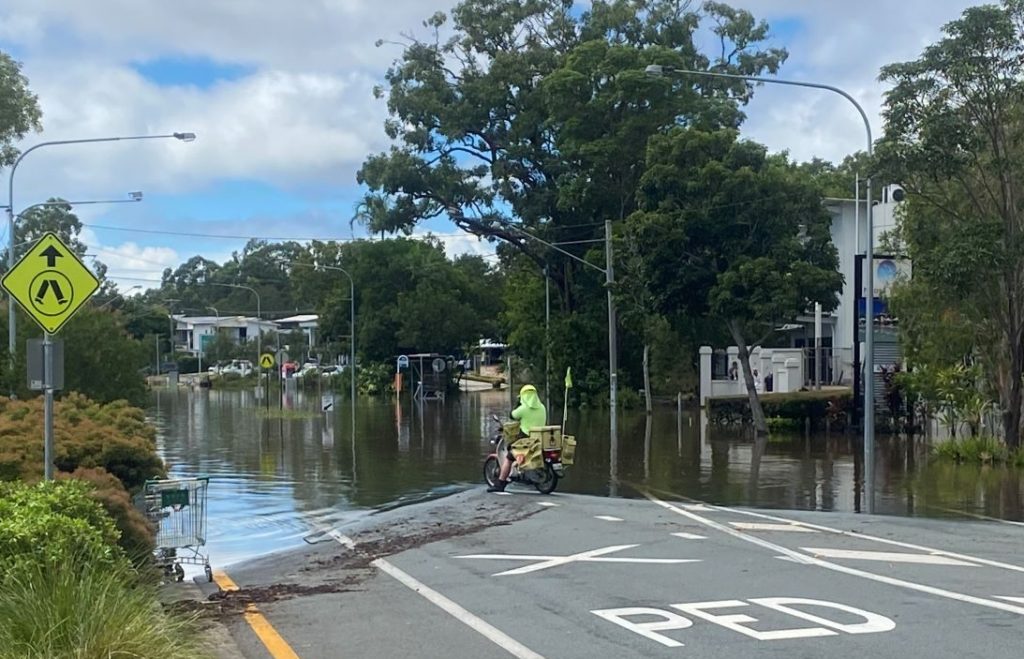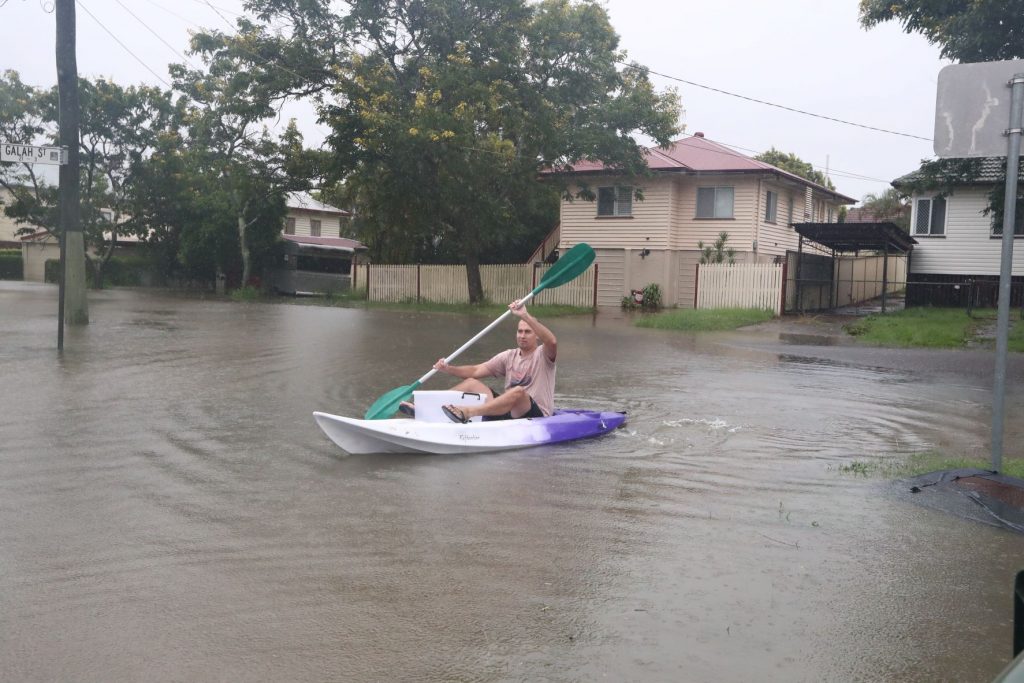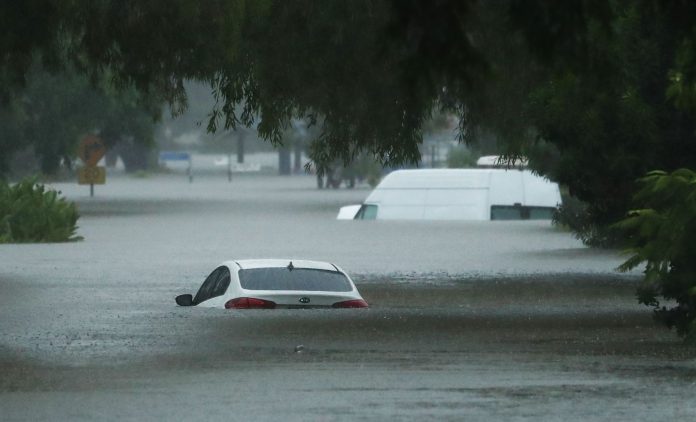Flooding rains continue to pound Australia’s east coast, with warnings the inundation may continue for days as the weather system heads south.
As the Sunshine Coast cleans up after the deluge and assesses damage to roads and property, Brisbane, the Gold Coast and northern NSW are under an Emergency Alert.
The Bruce Highway is closed to the north and south of the Coast and Steve Irwin Way is also impacted.
Transport and Main Road Minister Mark Bailey said crews were aiming to re-open the Bruce Highway in a limited capacity early Monday afternoon.
“We’ll be down to one lane in each direction at many spots between Brisbane and the Sunshine Coast so there will be extensive delays, and it will be a slow trip,” he said.
“I understand a lot of people have been isolated and need to get home, but my advice is to only travel between Brisbane and the Sunshine Coast if absolutely necessary.
“Our crews have done an amazing job to re-open the road after this record-breaking rain event.
“We are still assessing the damage and doing repairs, so it may still be a few days until the road fully re-opens.”
Latest updates regarding the Bruce can be found at qldtraffic.qld.gov.au.
Information and details on local road closures can be found on Sunshine Coast Council’s Disaster Hub website: disasterhub.sunshinecoast.qld.gov.au.
Noosa residents are advised to monitor: disaster.noosa.qld.gov.au.

Prime Minister Scott Morrison visited Brisbane late on Sunday assuring residents recovery preparations were underway as the deadly weather event continued.
“This is a serious natural … flooding event that we are seeing impact right throughout everywhere from Bundaberg to the border,” he said.
“All the way out to Toowoomba and particularly in places like Gympie, this is a very serious situation.”
With “a very anxious night” ahead for residents, the prime minister said he wanted to stress that “the planning for the recovery has already begun” and the resources and support needed were on hand.
Residents along the Brisbane River have been asked consider evacuating, as overnight flows and are likely to coincide with the morning and afternoon high tides.
Brisbane City Council said full-scale or partial flooding would affect Brisbane City, Newstead, West End, New Farm, Milton, St Lucia, Bulimba, South Brisbane, Toowong and Rocklea.

The M1 has been cut at Tallebudgera, Burleigh and Jacobs Well as intense rainfall hits the Gold Coast and almost 50,000 homes are without power in Brisbane, Ipswich, Logan and Gympie.
Flood warnings are in place for the Mary River, Mooloolah, Noosa and Maroochy rivers, Upper Brisbane and Stanley rivers, Laidley, Lockyer and Warrill creeks, as well as the Bremer and Logan rivers.
On the Sunshine Coast, Monday’s early high tide was expected to cause issues, but conditions should ease following this.
The Bureau predicts only a few showers for our region Monday, followed by mainly fine days Tuesday and Wednesday, before showers and possible thunderstorms return Thursday and Friday.
The Gold Coast and then, across the border, the NSW northern rivers and mid north coast are next in the firing line as the rain heads further south.
Gold Coast residents from Tallebudgera to Currumbin have been issued a ‘watch and act’ warning of heavy rainfall and potential flooding.
A severe weather alert for the southern state spans 450km from the Queensland border to Port Macquarie.
Senior Bureau of Meteorology hydrologist Ailsa Schofield said there was the potential, as the monster system moved south, for up to 250mm of rain in some areas.
“We won’t start to see the rainfall ease until tomorrow (Monday),” she said.
“What this means for communities is that there is very serious and life-threatening flash flooding and riverine flooding likely.”
In NSW, a man died on the state’s Central Coast on Friday after his LandCruiser was carried away by floodwaters, while police plan to resume the search on Monday for a man believed missing in floodwaters in Lismore in northern NSW.





